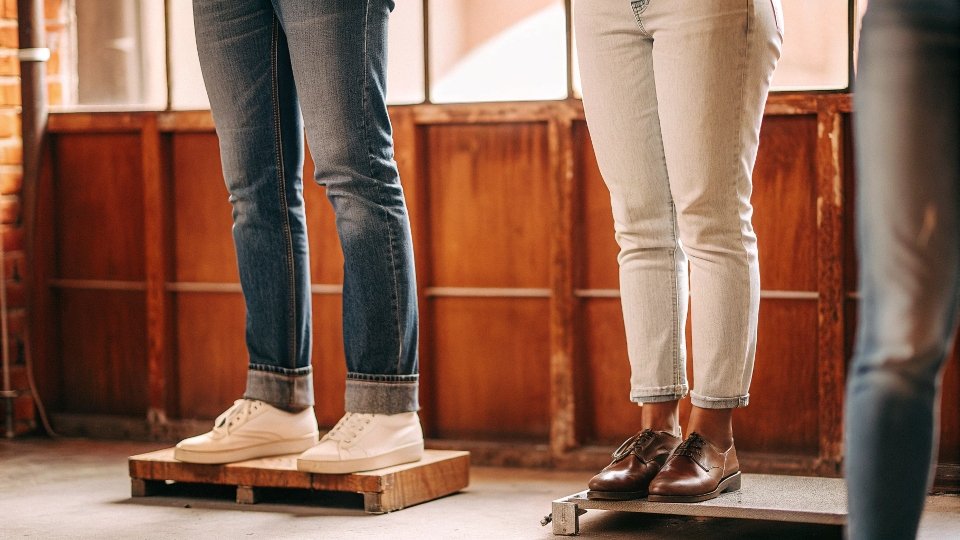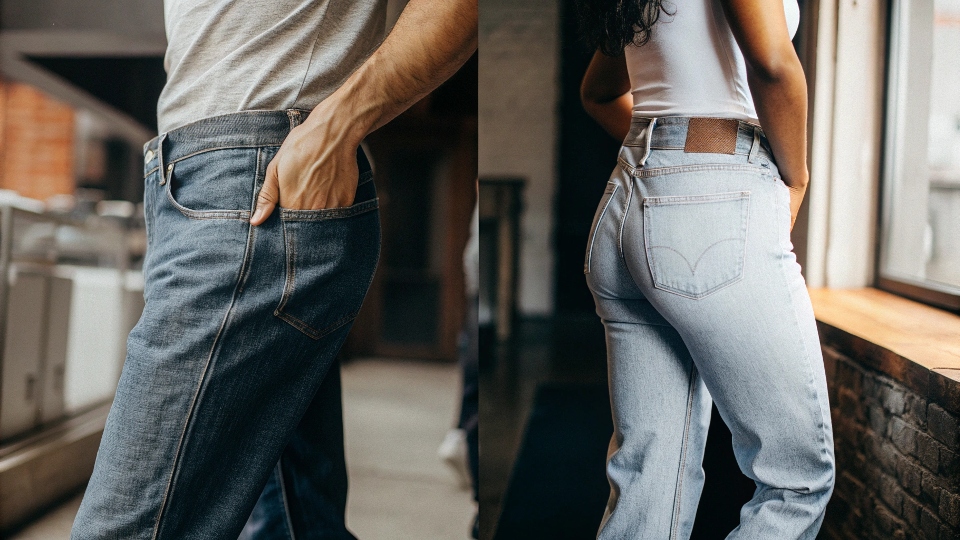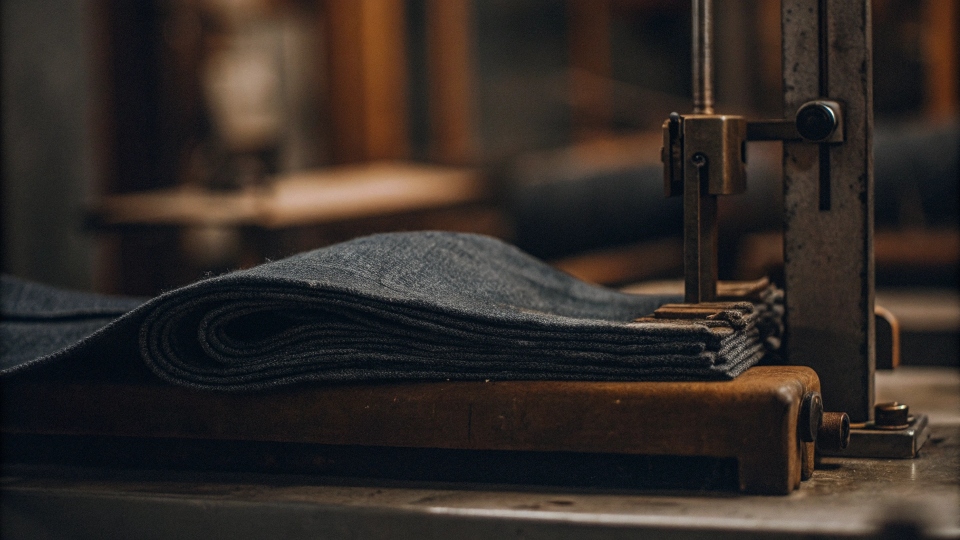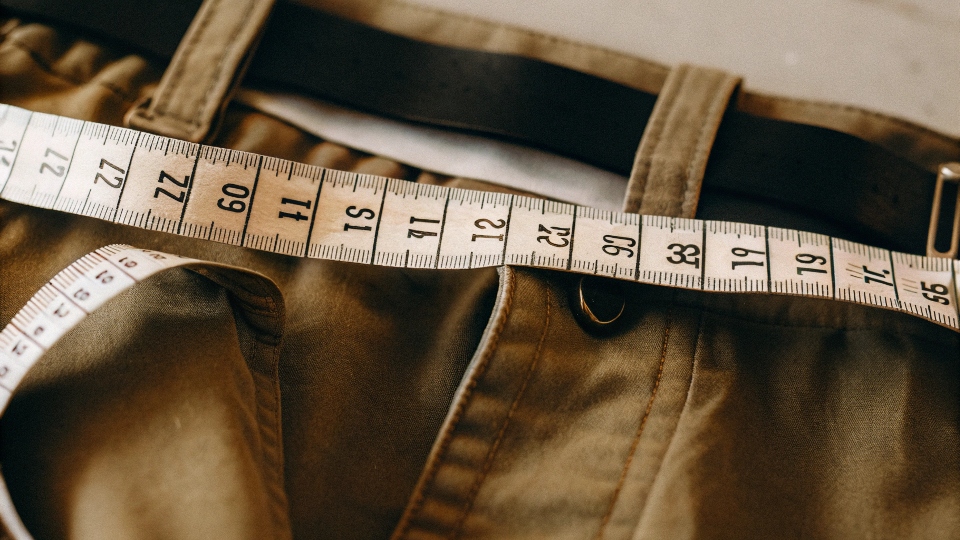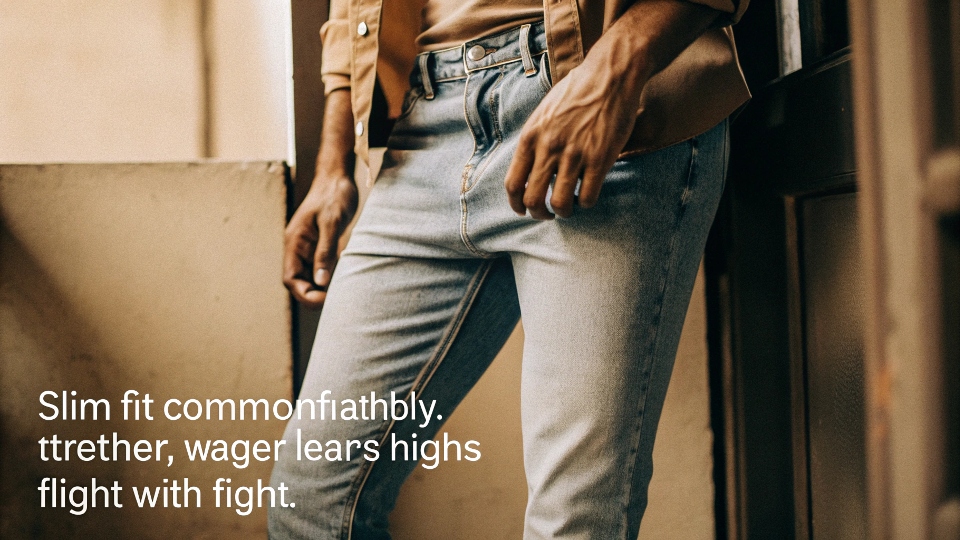You notice that your men's jeans feel thicker and more rugged than women's styles. You wonder if this is just your imagination, or if there is a real, technical difference in the material.
Yes, men's jeans are generally heavier than women's jeans. This is because they are often made from heavier-weight denim with less stretch, focusing on traditional durability. Women's jeans typically use lighter-weight denim with more elastane for a softer feel and a closer fit.
In my factory, we handle hundreds of rolls of denim fabric every week. I can tell the difference between a fabric destined for men's jeans and one for women's just by the feel and the weight of the roll.
It's a deliberate design choice that comes from a long history of different priorities for menswear and womenswear. Let's break down these differences so you can understand what's behind that feeling of weight.
What is the difference between ladies jeans and mens jeans?
You know they look different, but you can't quite pinpoint all the technical reasons why. This knowledge is crucial for designing a product that truly fits and functions for your target customer.
The main differences are in fit, fabric, and details. Women's jeans are cut for a curvier hip-to-waist ratio and use more stretch fabric for comfort. Men's jeans have a straighter cut and use heavier, more rigid denim for durability.
Every day, my team works with patterns that look similar from a distance but are fundamentally different up close. These differences are engineered into the jeans from the very first step of the design process.
It's not just about making one version smaller than the other; it's about building for two different body shapes and two different sets of expectations.
Fit and Cut
The most obvious difference is the pattern. A pattern for women's jeans has a more pronounced curve from the waist to the hips.
This creates a higher "hip-to-waist ratio" to accommodate a curvier body shape. Men's patterns are much straighter from the waist through the hip.
The rise (the distance from the crotch to the waistband) is also often lower in men's classic fits, while women's styles offer a huge range from low-rise to super-high-rise.
Fabric and Feel
This is where the weight difference really comes in. The majority of our orders for women's jeans specify denim with at least 2% elastane.
This makes the fabric lighter, softer, and much more flexible. For men's jeans, especially classic styles, 100% cotton denim is still very common. This results in a stiffer, heavier, and more durable fabric that breaks in over time.
Details and Function
The small details also follow this trend.
- Pockets: Men's jeans almost always have deep, functional front and back pockets. Women's front pockets are often shallow or fake to maintain a smooth silhouette.
- Stitching: Men's jeans often use thicker, more contrast-heavy thread (like gold or orange) that highlights the construction, a nod to their workwear roots. Women's jeans1 frequently use tonal stitching2 (blue thread on blue denim) for a cleaner, more subtle look.
| Feature | Men's Jeans | Women's Jeans |
|---|---|---|
| Cut | Straighter hip, lower hip-to-waist ratio | Curvier hip, higher hip-to-waist ratio |
| Fabric | Heavier, often 100% cotton (12oz+) | Lighter, high-stretch (9-11oz) |
| Pockets | Deep and functional | Often shallow or decorative |
| Stitching | Often thick and high-contrast | Often thin and tonal |
How heavy are men's jeans?
You hear terms like "heavyweight denim" but don't know what that means in actual numbers. Understanding fabric weight will help you specify the exact material you need for your designs to achieve the right look and feel.
A standard pair of men's jeans is made from mid-weight denim, which is typically 12 to 14 ounces per square yard. Heavyweight jeans, popular with denim enthusiasts, can be 16 ounces or more, feeling very stiff and thick.
When a client sends us a tech pack, one of the most important specifications is the fabric weight, measured in ounces per square yard (oz).
This single number tells us so much about how the final garment will feel, drape, and wear over time. For men’s jeans, the range is usually wider than for women's.
Understanding Denim Weights
We generally categorize denim into three groups:
- Lightweight (under 12oz): This is common for summer jeans, chambray shirts, and most women's stretch denim. It's breathable and comfortable right away. A typical pair of women's skinny jeans might use a 10oz fabric.
- Mid-weight (12oz - 16oz): This is the sweet spot for classic men's jeans. It’s what you find on a standard pair of Levi's 501s. This weight is the perfect balance of durability and comfort. It's sturdy enough to last for years but not so heavy that it's difficult to break in. The vast majority of men's jeans we produce fall into this category, usually around 13.5oz.
- Heavyweight (16oz+): This is serious stuff. It's thick, rigid, and can sometimes stand up on its own when new. This is for the denim purist3 who wants to create extreme fades. I remember one order for a Japanese brand that wanted 21oz denim. Our sewing machines struggled; we broke a lot of needles because the fabric was as tough as canvas. Heavyweight denim is a niche, but it has a very dedicated following.
What is a men's 32 in women's jeans?
You're trying to figure out sizing for a unisex style or just want to understand the market. You assume there's a simple conversion chart, but you can't find one that's consistent.
There is no direct or reliable conversion. A men's size 32 is based on a 32-inch waist measurement. Women's sizes (like 8, 10, or 28) are arbitrary and not standardized, also factoring in a different hip and thigh shape.
This is one of the most confusing parts of the apparel industry, even for us on the production side.
We work from precise measurement charts, not retail sizes. A "men's 32" means the finished waistband should measure around 32 to 33 inches. A "women's size 8" means nothing without a specific brand's measurement chart in front of me.
Why Conversion Fails
The systems are built on totally different principles.
- Men's Sizing: It's a dimensional system. A size "32x30" means a 32-inch waist and a 30-inch inseam. It's straightforward and based on two key measurements.
- Women's Sizing: This is often called "vanity sizing4" and it's completely arbitrary. A size 8 in one brand might measure the same as a size 6 or a size 10 in another. The number is more of a label than a measurement. Furthermore, women's sizing has to account for a much wider variety of hip-to-waist ratios.
A woman who wants to buy a men's 32 jean would need to measure her own waist to see if it's around 32 inches, but she would likely find the hips and thighs too straight.
A man trying to buy women's jeans would have to ignore the size number completely and just try them on until he found something that fit his waist and hips. This lack of standardization is a huge challenge in the industry.
Why do women's jeans fit me better than men's?
As a man, you might find that you prefer the fit of women's jeans5. You wonder if this is unusual, and what it is about their construction that works better for your body type.
It's likely because women's jeans typically have more stretch and are designed with more room in the hips and thighs relative to the waist. For men with an athletic build (slimmer waist, larger thighs), this cut can eliminate tightness and provide more comfort.
This is something I have heard more and more over the last decade. It’s not unusual at all. The reason comes down to the two factors we've been talking about: fabric and cut. Many men, especially those who are active or have a more athletic build, find traditional men's jeans restrictive.
The Power of Stretch
The biggest factor is probably the fabric. Most women's jeans contain 2-5% elastane6. This small amount of stretch fiber makes a massive difference in comfort and mobility. The jeans move with you instead of fighting against you. For men who are used to the stiffness of 100% cotton denim, trying on a pair of stretch jeans can be a revelation. The fabric adapts to your shape, especially around the knees and seat when you sit or bend.
A More Accommodating Cut
Second is the cut. While men's jeans are cut straight, women's jeans are designed with a curve. For a man with well-developed glutes and thighs from sports or working out, the straight cut of men's jeans can feel tight in the seat and thighs while being too loose at the waist.
A women's style, designed to accommodate curves, can ironically provide a better fit for this body type. The fashion industry has noticed this, which is why you now see many men's "athletic fit" jeans.
These new styles are a direct response to this need; they borrow the design principles from womenswear by offering more room in the seat and thigh and adding stretch to the fabric.
Conclusion
Men's jeans are usually heavier due to their focus on durable, 100% cotton fabric. This choice influences their fit, feel, and function, creating a product that is fundamentally different from a woman's lighter, stretchier jean.
-
Explore the unique features of men's jeans, including their durability and fit, to understand why they differ from women's styles. ↩
-
Discover how tonal stitching contributes to the subtle aesthetic of women's jeans. ↩
-
Discover the world of denim purists and their preference for heavyweight denim and unique fades. ↩
-
Learn about vanity sizing and how it complicates women's jean sizing compared to men's. ↩
-
Discover the design elements of women's jeans that cater to different body shapes and preferences. ↩
-
Understand the role of elastane in providing stretch and comfort in women's jeans. ↩

